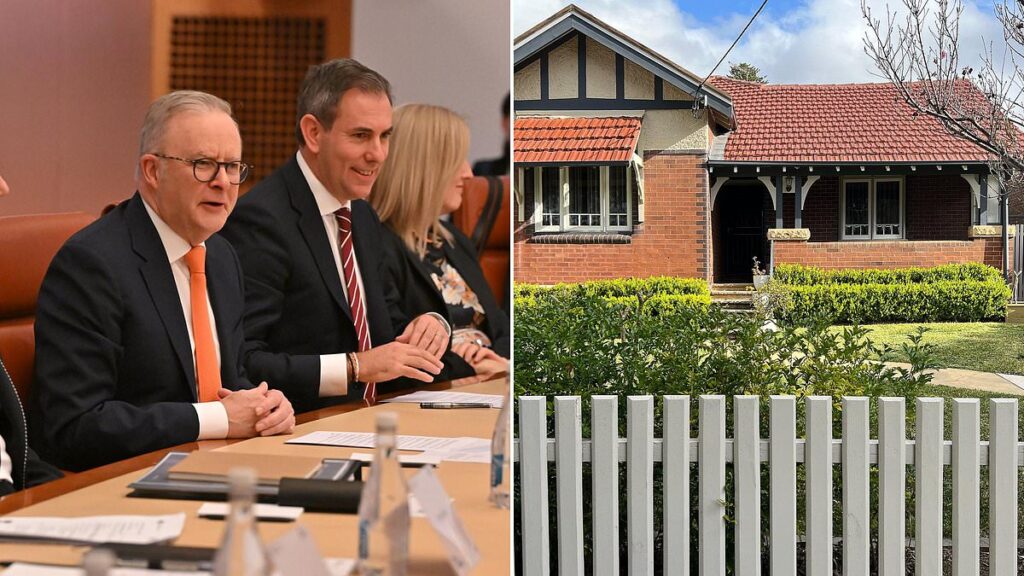
A left-leaning think tank, the Australia Institute, has urged the Albanese government to consider implementing a two percent wealth tax on Australians with assets exceeding $5 million. This proposal, submitted during the government’s three-day Economic Reform Roundtable, aims to introduce three ‘simple’ tax reforms to strengthen the nation’s financial health.
The wealth tax, which would exclude superannuation and the family home, is projected to generate over $41 billion annually. Additionally, the think tank advocates for the reintroduction of an inheritance tax, abolished federally in 1979, and the elimination of the 50 percent capital gains tax (CGT) discount, a policy established in 1999.
Historical Context and Policy Impact
The capital gains tax discount has been a contentious issue in Australian politics. Labor’s previous attempts to reduce the discount to 25 percent contributed to their electoral defeats in 2016 and 2019. Under the current policy, Australian landlords benefit from a 50 percent CGT discount when selling an investment property held for at least 12 months. This means if a property appreciates by $100,000, only $50,000 is taxable income.
Introduced by John Howard’s Coalition government 26 years ago, this policy has been linked to a significant surge in property prices, outpacing wage growth. As a result, average full-time workers earning $104,520 annually struggle to afford typical capital city homes priced over $1 million, with banks hesitant to lend more than six times a borrower’s salary.
Proposed Reforms and Economic Implications
The Australia Institute’s report suggests that reviving an inheritance tax and eliminating the CGT discount could collectively raise an additional $29 billion, bringing the total potential revenue from these reforms to $70 billion. The think tank argues that these funds could support essential services such as education, healthcare, and welfare.
Matt Grudnoff, senior economist at the Australia Institute, stated, “Australia is a low-tax country that does not do a good job of taxing wealth. Correcting this would raise huge amounts of extra revenue for essential services and ease growing inequality in Australia.”
Grudnoff emphasized that even with exemptions for the family home and superannuation, a two percent wealth tax on individuals worth over $5 million could generate $41 billion annually. Limiting this tax to the 200 wealthiest households would still yield $12.5 billion per year.
Expert Opinions and Economic Concerns
While the proposed reforms aim to address inequality, they have sparked debate among economists. AMP chief economist Shane Oliver warned that these measures could harm the economy. He argued that increasing taxes on high-income earners might initially boost the budget but could ultimately deter economic growth by reducing incentives for work and investment.
“Tax the rich sounds fine in theory, but all of those reforms will further increase the tax on high-income earners,” Oliver told news.com.au. “Our tax system is already skewed, it’s already highly progressive.”
Oliver highlighted that the top 10 percent of income earners in Australia already contribute nearly 50 percent of income tax. He cautioned that while the reforms might raise significant revenue, they could also undermine long-term economic confidence and entrepreneurship.
Alternative Perspectives and Future Considerations
In a related discussion, university economists Peter Siminski from the University of Technology, Sydney, and Roger Wilkins from the University of Melbourne proposed taxing capital gains on the family home to address the housing crisis. They argue that the current exemption disproportionately benefits the wealthy and deprives the government of crucial revenue.
However, neither major political parties nor minor parties like the Greens have advocated for a capital gains tax on the family home or the reintroduction of inheritance taxes in recent elections. The debate over these tax reforms continues, with significant implications for Australia’s economic landscape and social equity.
As the government considers these proposals, the outcome could reshape Australia’s tax system and address longstanding issues of wealth inequality and housing affordability. The discussions at the Economic Reform Roundtable may set the stage for future policy shifts in the nation’s approach to taxation.






